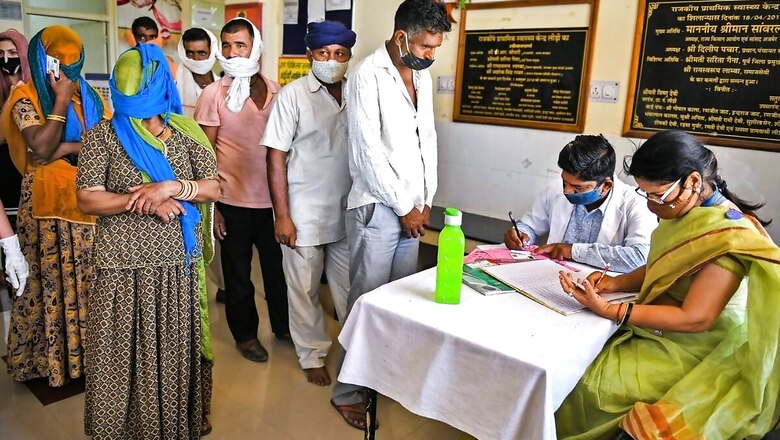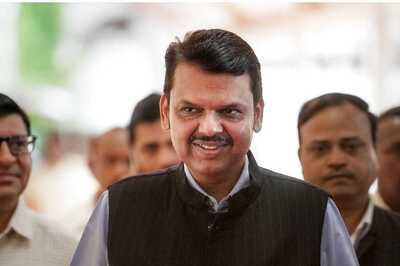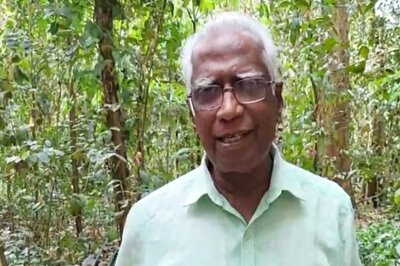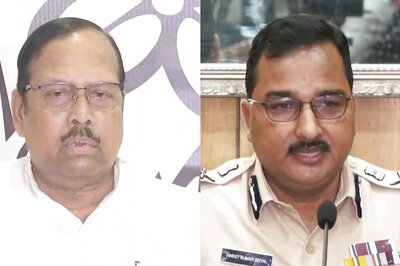
views
While the first wave of the COVID-19 pandemic in India had seemingly spared rural populations, the recent surge in cases from May 2021 has severely impacted districts, towns and villages nationwide. Even as urban centres reported news of severe oxygen crises and lack of hospital beds, in villages across the country, people were losing their lives even before they could reach health centres.
Hesitancy in testing and vaccination was observed in rural areas, sparked by fears, suspicion, stigmatization and misconceptions. Over 65 per cent of India’s population lives in rural areas and without accurate data on the number of cases or lives lost in these regions, the true extent of the damage remains to be ascertained. With densely populated states like Maharashtra reporting higher positivity rates in rural areas than cities, and distressing images of bodies being abandoned, the toll is likely to be high.
The situation is most unfortunate given evidence that effective early treatment for COVID-19 can prevent severe illness and curb transmission. With people losing loved ones due to delays in testing and access to treatment and low or no knowledge about early symptoms, there is a critical need for improving health infrastructure to check preventable deaths. In order to do this, we must equip district-level workers, officials, COVID working groups and planning committees with the tools and training to respond effectively to localized outbreaks.
Frontline health workers have been heroically playing the part of foot soldiers in the war against COVID-19 since March 2020. Equipping them with resources to actively promote awareness about prevention and early diagnosis can be an important way to foster better health outcomes.
Equipping Soldiers on the Ground
We have seen that the numbers of cases and deaths vary widely from state-to-state and even district-to-district. In a recent interaction with District Magistrates (DMs) of some of the worst affected regions in the country, Prime Minister Narendra Modi himself recognized the importance of officials working on ground, calling them ‘field commanders’ against COVID-19.
ALSO READ | Fighting COVID-19 In Rural India Means Fighting Hesitancy And Disinformation, Writes Haryana Minister
By building a taskforce in every district in the country, to support DMs and other field administrators and to facilitate better coordination and convergence among different departments and other stakeholders, we should develop a sustainable model for combating this pandemic and strengthening district-level health systems. Besides key tools and infrastructure, local authorities must be given the autonomy to respond to emerging needs and spend existing funds without conditionalities.
In states like Kerala, Odisha, Maharashtra among others, local governments have been proactive in engaging district-level officials and partners in activities aimed at mitigating illness, death and suffering due to the pandemic. Anganwadi workers, Auxiliary Nurse and Midwives (ANM), Accredited Social Health Activists (ASHA), teachers and Self-Help Groups (SHGs) have been involved in not just health care delivery but also ensuring food security and awareness generation.
The government must partner with local civil society organisations, including Self-Help Groups (SHGs), local farmers’ cooperatives and Resident Welfare Associations, for rapid and timely action. Groups such as these, along with Panchayati Raj institutions and Village Health Sanitation and Nutrition Committees (VHSNCs), can effectively identify and respond to the most vulnerable.
Backing on-ground activities with technology is a critical way to ensure better data collection, which would lead to more accurate policy decisions. This will ensure better distribution of medical and relief materials to areas that are worst affected. By equipping working groups with computers and IT support, real-time information about the demand and supply of medical oxygen, hospital beds, test kits, ambulances, and medication can be monitored and updated. Giving frontline workers access to this information can help them link patients in need with services—ASHA workers and ANMs can register patients directly from the ground level into the triage system. Stockpiles of essential items can be deployed as needed.
Need an Agile Approach
Vaccination is a key approach to significantly reduce the impact of the COVID-19 pandemic. With the central government proposing that they will provide vaccination to all by the end of 2021, COVID working groups, made up of ASHA, ANM and Anganwadi workers, can play a major role in conducting drives, but also providing communities with key information to stem vaccine hesitancy.
ALSO READ | Covid-19: Plugging Rural India’s Healthcare Gaps Calls For A Multi-Pronged Strategy
India has prior experience in successfully carrying out large, targeted vaccination campaigns, against diseases such as small pox and polio, under the country’s Universal Immunization Programme, which targets 26.7 million newborns and 29 million pregnant women every year. Regional or block-level working groups can ensure the swift and effective delivery of vaccinations, as and when they become available, via door-to-door drives or other community interventions.
Till that is possible, early and effective treatment to those affected by COVID-19 is critical, as is prevention by promoting COVID-Appropriate Behaviours (CAB), and a comprehensive strategy for social behaviour change communications. With only five hospital beds per 10,000 population and 8.6 physicians for every 10,000 people, India is underprepared for a crisis of the magnitude of the current pandemic. An agile approach is, therefore, critical for ensuring rural India is able to maximize the use of the limited infrastructure and resources available.
Instituting taskforces can ensure that resources are utilized effectively, information sharing is encouraged, and communities are successfully engaged. Additionally, best practices from regions, which also face common challenges, can be documented, shared and adopted by other districts. At a time when the benefits of having decentralized solutions to the pandemic become more apparent, these ground-level bodies could be the key to systematically ensuring a reduction in COVID-19 related morbidity and mortality in rural India.
Read all the Latest News, Breaking News and Coronavirus News here.



















Comments
0 comment